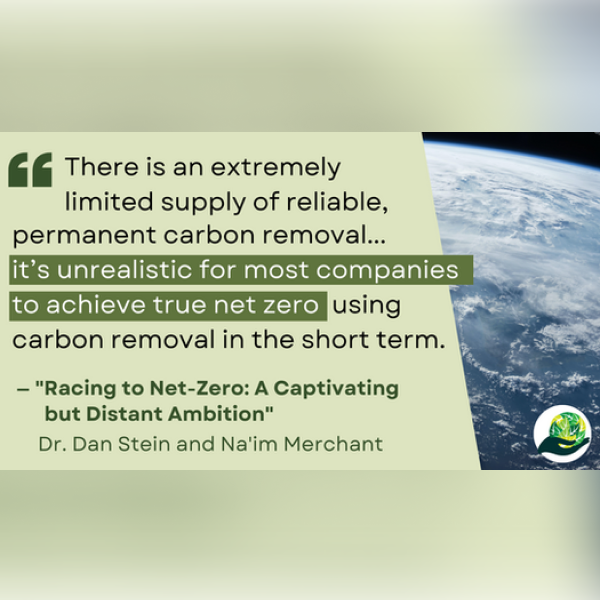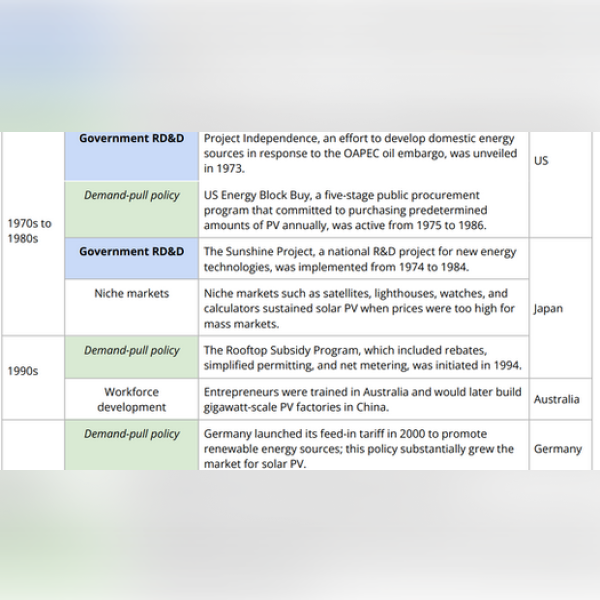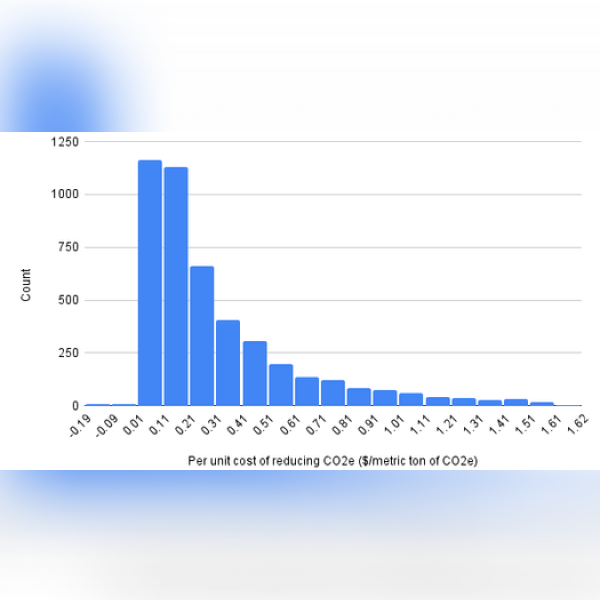Giving Green's 2023 annual impact report
In 2019, there was a concept called “SureCool”.
“We propose a new organization, SureCool, to help funders find the most effective use of their dollars in fighting climate change.”
“Sounds like an air conditioning brand” was the early feedback. We went back to the drawing board on the name, but the concept had staying power.
Four years later, Giving Green has gone from a side-of-the-desk project to a team of seven, moving $16.5 million over the years to a portfolio of highly effective climate initiatives.
In 2023, we continue to improve our research and grow our impact. Recognizing that multiple levers are needed for systems change, we increased the size and the diversity of our list of top climate nonprofit recommendations. Knowing that we need to meet people where they are, we diversified communications channels, reaching a wide range of audiences. Acknowledging the different manifestations of climate change across different geographies, we deepened partnerships in key regions in Europe and Asia-Pacific.
Yet it still feels like the start of many new chapters. As the planet continues to heat up, the need grows for evidence-based climate action that truly moves the needle. In 2024, we are bolstering research and communications functions to further increase the size and the effectiveness of climate giving.
We thank our supporters for joining us on this journey.

Who we are
Giving Green guides individuals, foundations, and businesses to make more effective climate-giving decisions. We find evidence-based, cost-effective, and high-leverage organizations that maximize the climate impact of your money.
What we do
We offer two flagship products:
- For individuals, foundations, and other donors: top climate nonprofit recommendations and audience-specific recommendations (e.g., for Australian donors).
- For businesses: a comprehensive guide on effective corporate climate actions, featuring practical strategies and recommendations.
We are also actively expanding the following services:
- Bespoke consulting: we deliver customized research and recommendations to individuals and organizations upon request.
- For investors: we have conducted initial research on climate-friendly investments for retail investors and we hope to expand this workstream in 2024.
Our organization
Our organization consists of two functions:
- Research: conduct climate-giving research and produce recommendations.
- Communications: disseminate findings to diverse audiences.
Our products and functions are guided by our organizational values of truth-seeking, humility, transparency, and collaboration.
Theory of change

Our impact
Our primary metric for measuring impact is “money moved”, i.e., donations and purchases directed to our recommendations due to our influence. We estimate the additional dollars we drove to our recommended organizations each year, accounting for scenarios where we only receive partial credit for the donation.
We also calculate our impact multiplier, i.e., money moved to high-impact climate initiatives relative to the cost of our operations.
However, these are imperfect metrics because we do not find out about all the donations we influence. Therefore, we also gauge our influence through intermediate indicators such as press mentions and corporate engagement.
Money moved (in USD)
In 2023, Giving Green influenced an estimated $11.2 million towards our recommendations, up from $3 million in 2022 and $2 million in 2021.
One element that drove our impact higher in 2023 was a series of large donations made by an anonymous donor to all of our top recommendations.
Since Giving Green’s inception in 2020, we estimate that we have influenced $16.5 million.
See the appendix for details on how we calculated these estimates.

Impact multiplier
In 2023, we increased our “impact multiplier”—dollars we move to our recommendations, divided by our operating cost—to 19x. This means that every dollar donated to Giving Green in 2023 yielded about $19 in funding for our recommended high-impact climate organizations.

The vast majority of our expenses go to staff salaries and benefits. We have an overhead rate of 11% of expenditures that covers finance, legal, and administrative functions (provided by IDinsight, the nonprofit incubating Giving Green).
Our spending decreased slightly in 2023 due to a staff departure. In 2024, depending on funding, we hope to grow our headcount by one to two additional people.
We note that the projected expenditure for 2024 assumes that we make only one additional hire. We can absorb more funding for our operations to further increase our research and communications capacity.
Intermediate indicators
Press mentions
We believe by making scientific, transparent, and actionable giving opportunities more accessible to the mainstream audience via media coverage, we are introducing more rigor to mainstream conversations around climate giving.
In 2023, we were mentioned in the press 41 times, up from 28 in 2022. Notable mentions include op-eds published in philanthropy publications and our recommendations highlighted in popular outlets like Vox.
Corporate engagement
In 2023, we formally launched our business climate action guide, after initial previews in 2022. We hosted a webinar in April with over 200 registrants. Since the launch, we have engaged in a series of one-to-one consultations with seven companies, ranging from small startups to medium-sized finance companies to tech juggernauts.
Our corporate engagement aims to advance two goals:
- Strategy change: encouraging concrete improvements to a company’s sustainability strategy to identify bigger levers.
- Field building: bolstering the growing “beyond value chain mitigation” movement to encourage the private sector to go beyond their carbon footprint and advocate for systems change.
It is worth noting that it takes longer to shape corporate sustainability strategies than to update donation preferences, and money moved to our business recommendations does not fully capture the qualitative changes in strategic direction. We will continue to track and measure our impact from our business guidance.
2023 highlights
Recommended two new top nonprofits
In 2023, we identified two new impact strategies (next-generation geothermal energy and shipping & aviation decarbonization). Within these strategies, we made two new top recommendations (Project InnerSpace and Opportunity Green).
In total, we recommended five climate-giving strategies and six top nonprofits, growing the diversity of our recommendations to reflect the multiple levers needed to change the systems of unsustainable emissions.
Our 2023 top climate nonprofit recommendations are:
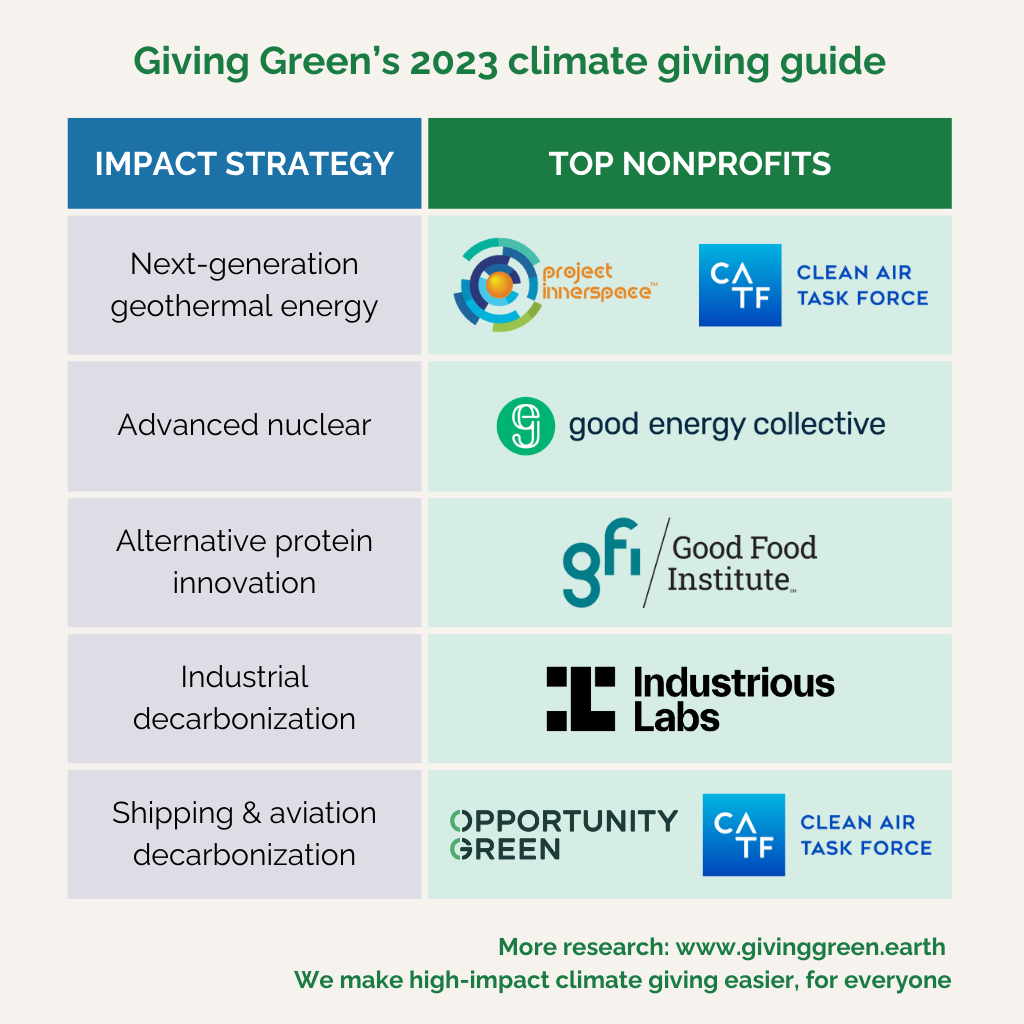
$782,000 raised through the Giving Green Fund
In late 2022, we launched the Giving Green Fund, a regranting fund featuring our top recommendations. The fund is our highest-impact giving option, and we were happy to receive $782,000 in donations to the fund in 2023. The median donation to the fund is $50, and we are pleased that the fund could help donors of all sizes give effectively.
We make disbursement recommendations quarterly and document the decisions publicly. As the Giving Green Fund grows, we plan to experiment with more sophisticated funding strategies, such as funding catalytic, new initiatives that are not yet public.
Improved research transparency and quality
Major updates to research quality include:
- Made early-stage prioritization more transparent by creating a public-facing research dashboard, showcasing ~40 impact strategies that we have assessed or plan to assess
- Formalized the external feedback process and recruited external reviewers with domain expertise.
- Published detailed documentation of our research process.
Nurtured key partnerships
To amplify our impact beyond our own networks, we invested significant time in 2023 to build and deepen partnerships.
Key groups include:
- Geographical: effective giving organizations based in specific countries or regions, such as Doneer Effectief in the Netherlands and Effectiv Spenden in Germany,
- Sectoral: networks centered around philanthropy and/or climate, such as the WINGS philanthropy network, Generation Pledge, the Asian Philanthropy Circle’s Climate Collective, and the Effective Altruism climate working group.
- Financial: financial communities that seek to use different forms of financial capital to generate positive social impact, such as the impact investment community.
Reached new audiences through events
In 2023 we experimented with events to reach specific demographics. We organized one in-person event with a group of high-net-wealth individuals. We also hosted two webinars, serving the business and philanthropy audiences, respectively. More than 600 people signed up to the two webinars, and 240 people attended live.
With a bigger team, we also ramped up our attendance and speaking engagements at major sectoral events to promote effective climate giving, such as a panel talk at the Center for Effective Philanthropy’s annual gathering.
Plans for 2024
Maximize the money moved to our recommendations
Building on the momentum in 2023, we aim to raise even more money for our recommended organizations and drive our impact multiplier even higher.
Expand research priorities to cover new intersections and regions
We recognize the many facets of climate change across geographies and social issues. We plan to devote more time to finding high-impact giving opportunities based outside of the US and Europe, specifically in low- and middle-income countries.
Continue to promote effective business climate action
As more studies cast doubts on carbon offsets' efficacy, the need for more evidence-based corporate climate action grows. We plan to continue thoughtful engagement in the private sector as advocacy for the “beyond value chain mitigation” movement grows.
Update research on sustainable investment
We continue to observe a high demand for evidence-based guidance on climate-friendly investment. We will actively seek to secure funding to update our 2021 research on ESG funds and climate impact investment,
Undertake new consulting projects
We know that our flagship products—top climate nonprofit recommendations and corporate climate action guide—do not meet the needs of all donors and their unique constraints and opportunities. In 2024, we hope to take on a small number of research consulting projects, allowing us to widen our impact and diversify our revenue streams.
We have taken on consulting projects of various sizes, from evaluating a specific organization to exploring giving opportunities in a particular sector to understanding the comparative advantage of a country. If you would like to explore consulting projects with us, please reach out.
Expand communications efforts
We plan to hire an additional communications and development officer in early 2024. We expect the new hire to boost existing outreach efforts and explore new growth channels, helping us convert existing audiences and reach new segments.
We find high-impact climate initiatives.
You can turbocharge them.
Giving Green
Incubated by IDinsight
https://www.givinggreen.earth/
Appendix: How we measure impact
Data sources
To calculate money moved, we first ask each recommended organization for its best estimate of money directed from sources we have influenced. Example sources include:
- Donors who clicked on a recommended organization’s site from Giving Green’s site
- Donors who proactively mentioned hearing about a recommended organization from a media piece informed by Giving Green
- Businesses that purchased carbon credits based on conversations with our team
- Foundations that made a gift after considering several sources of evidence, including Giving Green’s research
It is worth noting that different organizations have different tracking methods and capabilities. We cross-reference data from recommended organizations with other sources, such as our internal tracking, conversations with large donors or business purchasers, and regranters facilitating donations to our recommendations.
Impact attribution
Once we have this data, we multiply each dollar amount by a percentage that represents our estimate of the share of influence we had over that amount. This subjective assessment encompasses questions like: Were these donors influenced by multiple sources, and if so, does Giving Green only deserve “partial credit”? How certain are we that these donors were influenced by Giving Green versus another source? For example, if a recommended organization raised $50,000 from an effective altruist audience, but it was already well-known in effective altruist spaces, we might assign ourselves just 10%, or $5,000, of impact. However, if no other mention of that nonprofit appears in effective altruist spaces, we might assign ourselves 100% of the impact.
We assign three such percentages:
- A “certain” percentage: what share of this money are we completely certain is attributable to Giving Green?
- A “best guess” percentage: taking into account the above factors
- An “optimistic” percentage: taking an optimistic view of the above factors
By adding all “best guess” amounts together, we reach a total “best guess” for money moved. Similarly, adding the “certain” amounts together and “optimistic” amounts together gives us an estimated range of money moved.

In 2023, our “best guess” number is $11.2M, which is much higher than our “certain” number, $2.0M. This is primarily because we learned of a series of large donations to our recommendations. We have a lot of evidence that suggests that these donations are due to the influence of Giving Green, but we are not completely certain, so for transparency we have excluded these from our “certain” estimate.
Uncertainties
We are uncertain whether the “money moved” metric adequately accounts for the counterfactual impact of the money. If, for instance, a donor would have otherwise given to a nonprofit that is 50% as effective, should we credit ourselves with 50% of this money moved? Our current assumption, based on limited customer research, is that most donors would have given to significantly less effective nonprofits or not at all, but we recognize that this is a major uncertainty.
We are also uncertain whether our data is capturing all of our donor audience, and therefore our impact numbers may be a significant underestimate. For instance, it is relatively easy for us to assess our impact on mass-market online donors whose clicks can be tracked. However, it is difficult to assess our influence with larger donors or business purchasers, who may give via check or wire transfer and not proactively mention Giving Green as an inspiration. For example, in several cases, we have heard that we influenced large gifts many months after the fact.
Support Our Work
Giving Green Fund
One fund. Global impact. One hundred percent of your gift supports a portfolio of high-impact climate organizations, vetted by our research.
Best for:
Donors who want the simplest way to impact multiple climate solutions.
Top Climate Nonprofits
Meet the organizations on Giving Green’s list of high-impact nonprofits working to decarbonize our future, identified through our rigorous research.
Best for:
Donors who want to give directly and independently.
Support Our Work
We thoroughly research climate initiatives so you can give with confidence. For every $1 we receive, our work unlocks another $21 for effective climate solutions.
Best for:
Donors who want to amplify their impact through research.
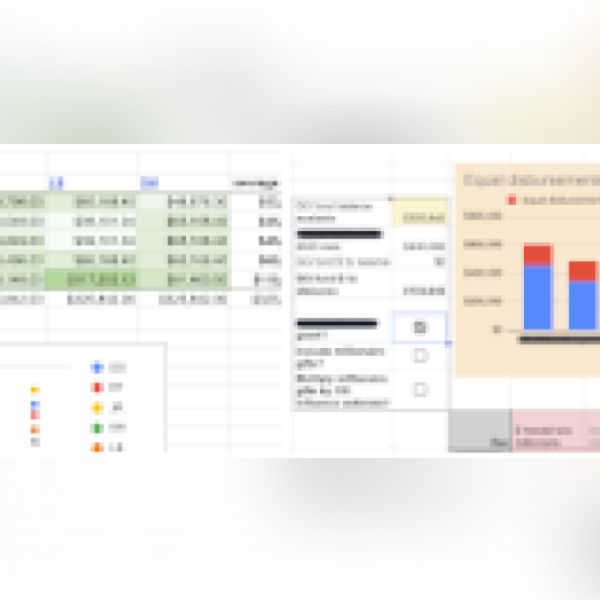
.png)


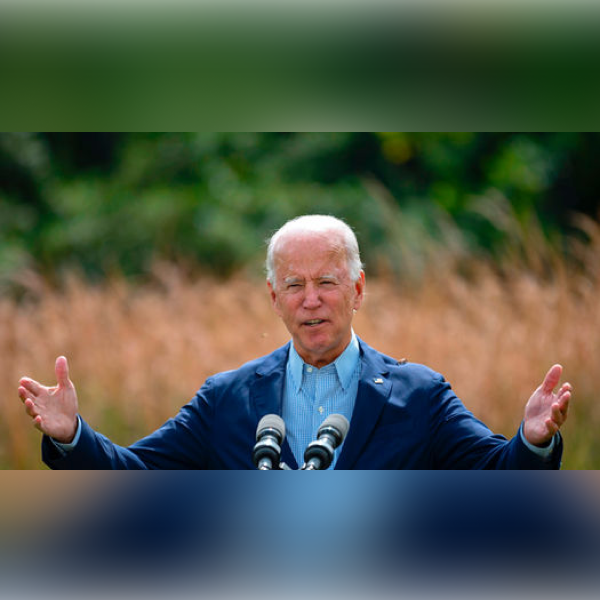






.png)




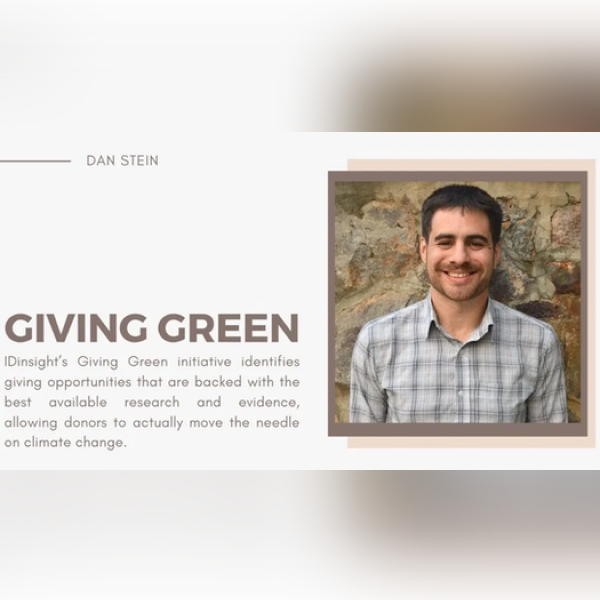








.png)
.png)













.png)

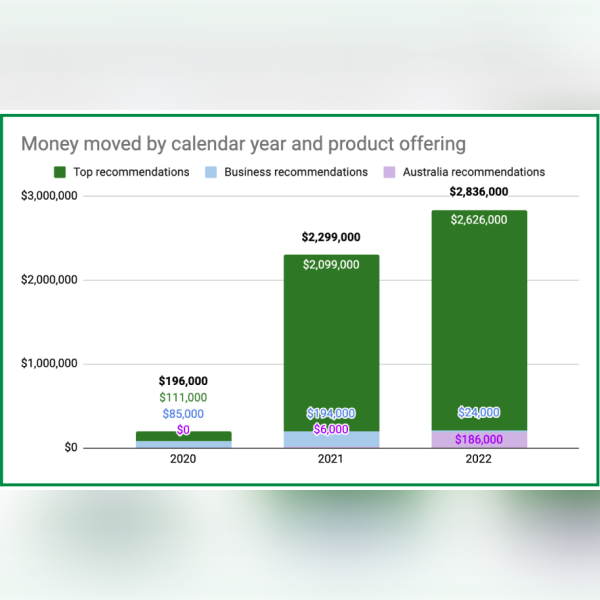
.png)


.png)









.png)







